San Juan Mountain Mushrooms
An account of finding mushrooms in the mountains of Southwestern Colorado
We were going through a heat wave here in Cortez a few weeks ago. The Monsoons had started up in the mountains, but it was still uncomfortably warm around the house. I decided to head up into the mountains to cool off.
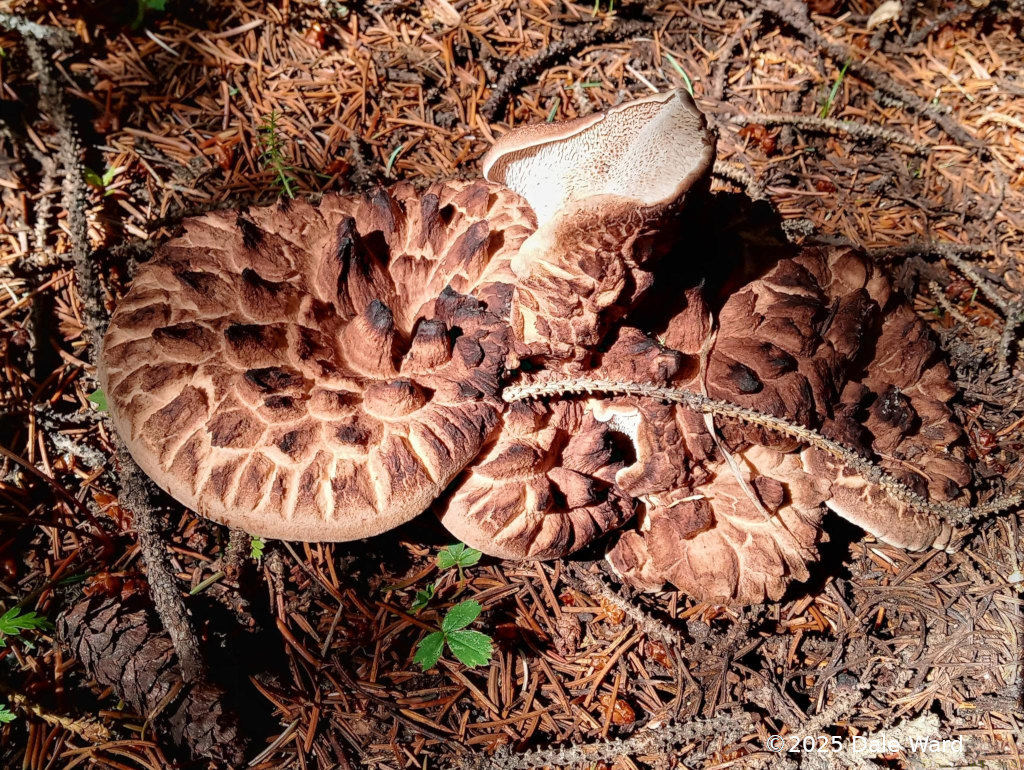 Hawks wing Mushrooms (_Sarcodon imbricatus_)
Hawks wing Mushrooms (_Sarcodon imbricatus_)
As I was walking through the trees, I got one of those corner-of-the-eye, partly-seen glimpses of something on the ground next to my boot. My brain started processing the object before I was even aware I’d seen it: Something scaled, brown, coiled…IT’S A RATTLESNAKE! I was jumping away even before the thought had fully-formed.
No, it wasn’t a rattlesnake. Rather, it was a cluster of Hawks wing Mushroms (Sarcodon imbricatus). But I did enjoy the energizing jolt of what a friend used to call “herpatonin”.
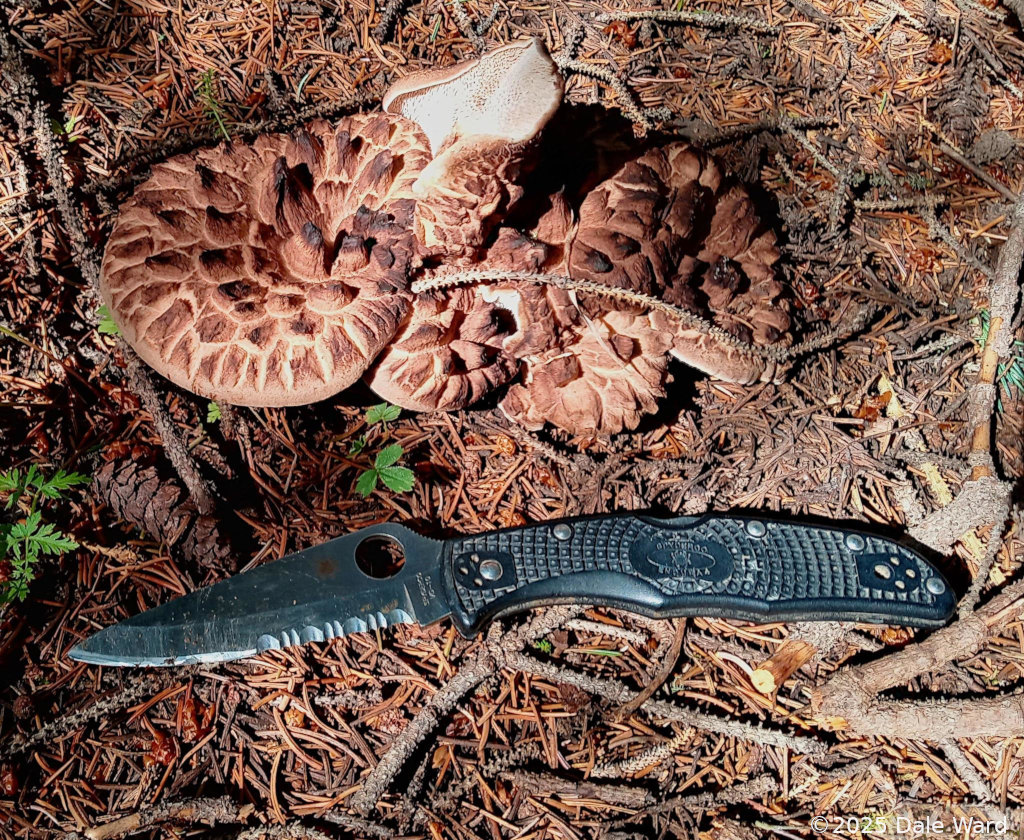 Hawks Wing Mushrooms, with pocket knife for scale
Hawks Wing Mushrooms, with pocket knife for scale
I’m a big fan of Hawks Wing Mushrooms. They are really pretty, they are common, and they taste great. I collected a few, and then continued on.
I started coming across King Bolete (Porcini) Mushrooms (Boletus rubriceps). These taste fabulous. There were numerous large Boletes, a foot or so in diameter, and lots of younger, smaller Boletes.
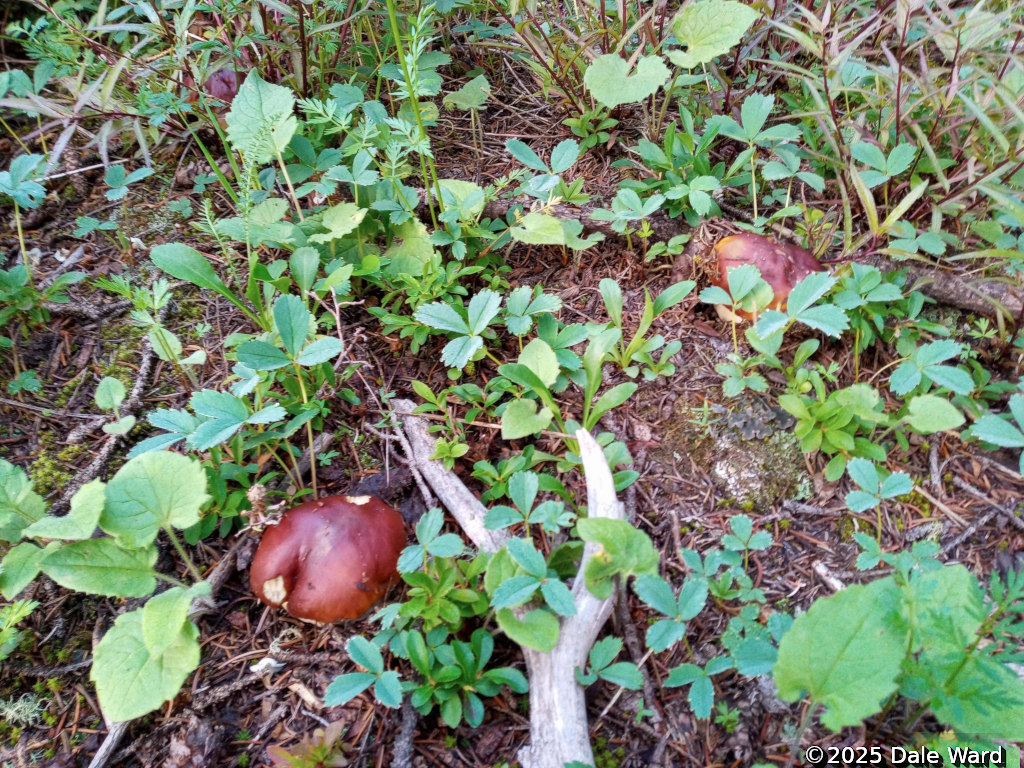 Young King Bolete Mushrooms (_Boletus rubriceps_)
Young King Bolete Mushrooms (_Boletus rubriceps_)
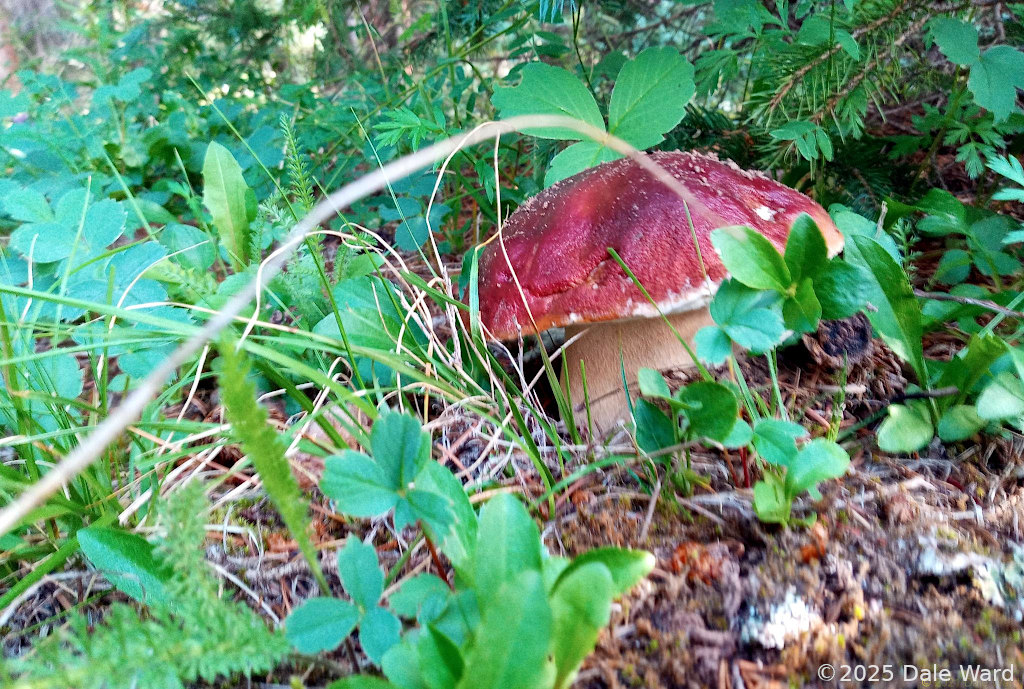 Young King Bolete Mushroom (_Boletus rubriceps_)
Young King Bolete Mushroom (_Boletus rubriceps_)
I had inadvertently timed it nearly perfectly. The mushrooms were out, but they had not been out long enough to begin to decay, or to get infested with maggots. Perfect.
When I got home, I spent two or three hours processing all of the mushrooms. We ate a lot of them over the next couple of days, and I dried the rest of them for use during the upcoming Winter.
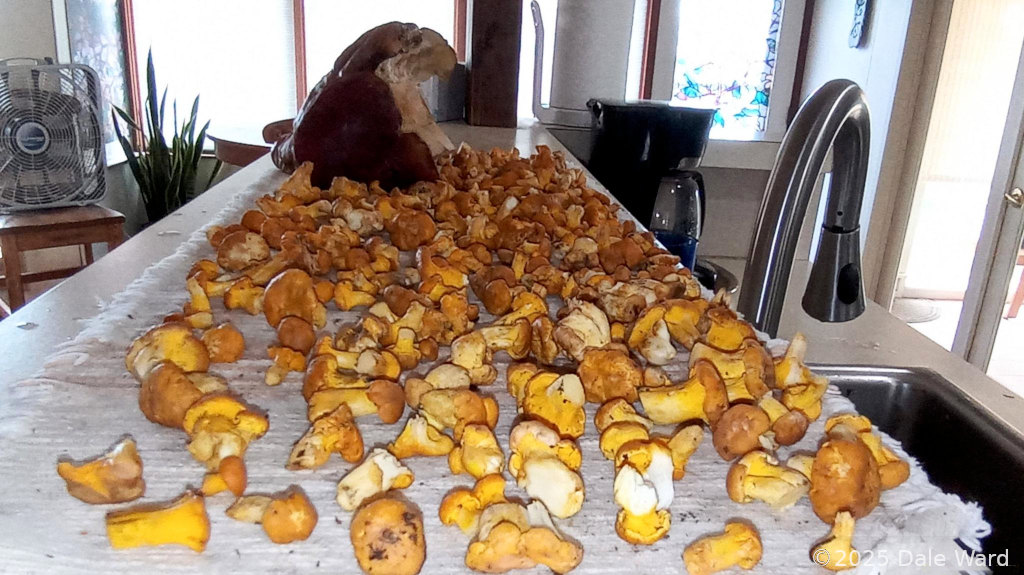 Golden Chanterelle mushrooms (_Cantharellus roseocanus_) in the foreground, large King Bolete Mushroom in the background
Golden Chanterelle mushrooms (_Cantharellus roseocanus_) in the foreground, large King Bolete Mushroom in the background
There are a lot of things that I find to be remarkable about mushrooms. One of the things that I find to be interesting is the bounty of food that they provide. It’s common to find that rodents such as Squirrels have been gnawing on the mushroom caps. I think deer eat them, too, but am less certain about that.
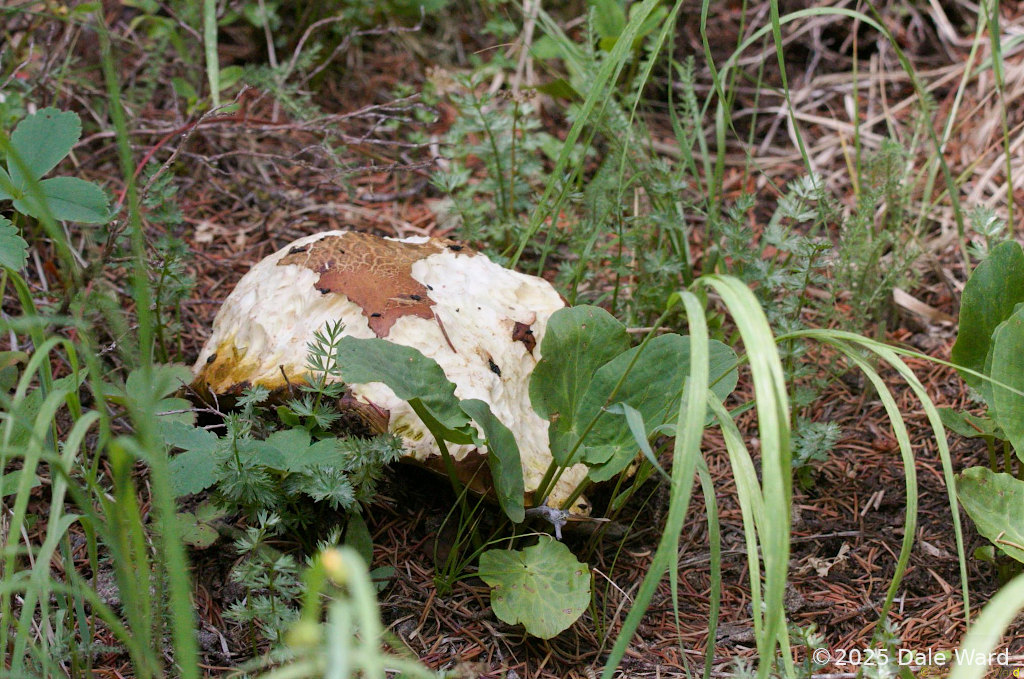 King Bolete with much of mushroom cap gnawed away by rodent teeth - guessing it was Squirrels
King Bolete with much of mushroom cap gnawed away by rodent teeth - guessing it was Squirrels
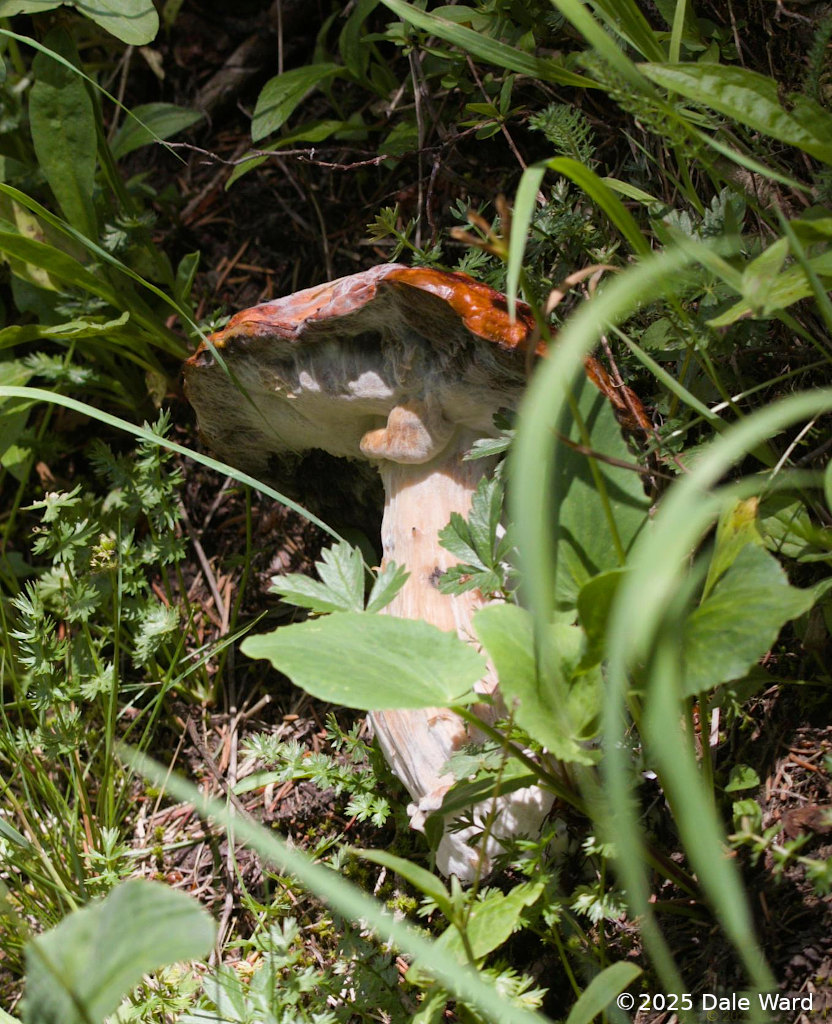 King Bolete, uprooted and partially eaten by animal
King Bolete, uprooted and partially eaten by animal
My favorite idea, though, is the notion that the mushrooms are just a tiny piece of the organism that is the fungus. The mushrooms are essentially just flowers of the fungus, in the same way that the blossoms on a Cherry Tree are but a small part of the whole tree.
The fungi themselves are tangled mats of hyphae living in the soil. They entwine with plant roots and other fungi, they “scavenge” for organic matter. Some types of fungus may even act as the wiring of a sort of woodland network, passing nutrients and water between trees..
The hyphae may follow a tree root, or perhaps an old, buried branch, or just have found a spot that suits them, moisture and temperature-wise.
That’s one of the reasons that mushrooms often occur in clumps, or lines, such as the toxic Fly Agaric Mushrooms below. The mushrooms are bursting out of the underground hyphal mats, which themselves are forming clumps and lines.
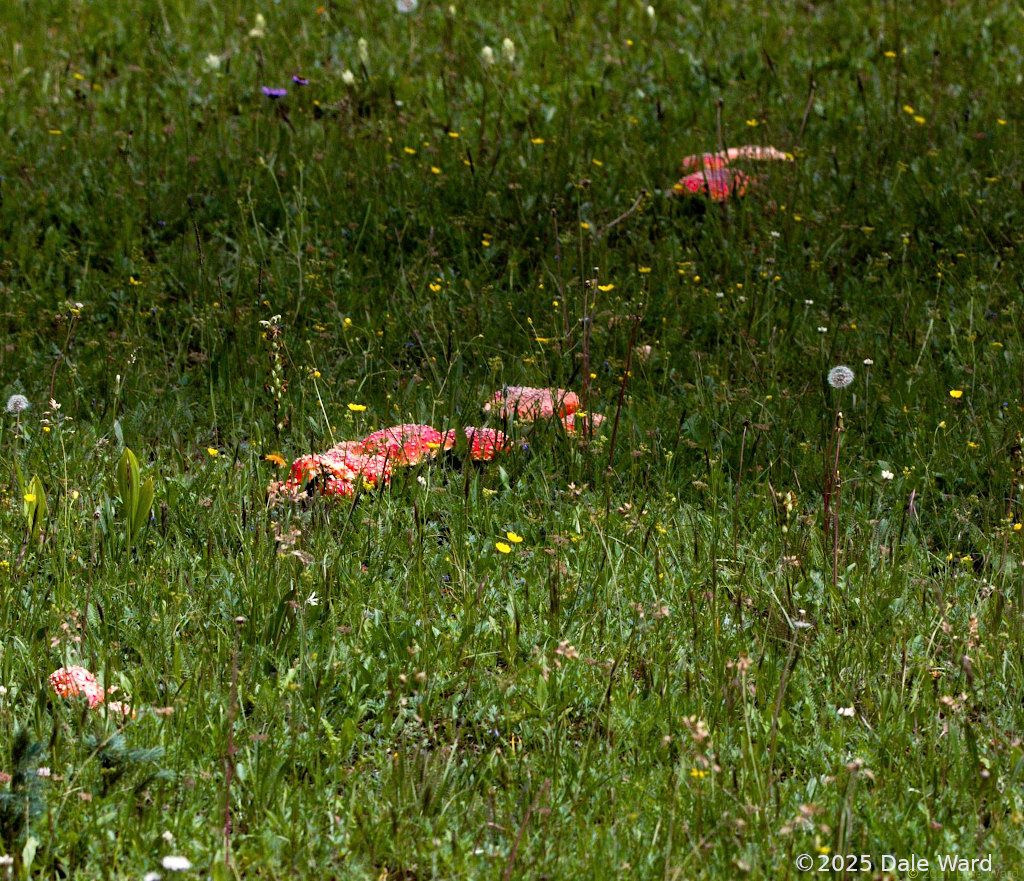 Fly Agaric Mushrooms (_Amanita muscaria_) (poisonous) in a meadow. Note how they are growing in a line.
Fly Agaric Mushrooms (_Amanita muscaria_) (poisonous) in a meadow. Note how they are growing in a line.
The fungi are there all of the time, not just when the mushrooms emerge. The things that we pick and eat - those are just fruiting bodies.
That thought blows me away.